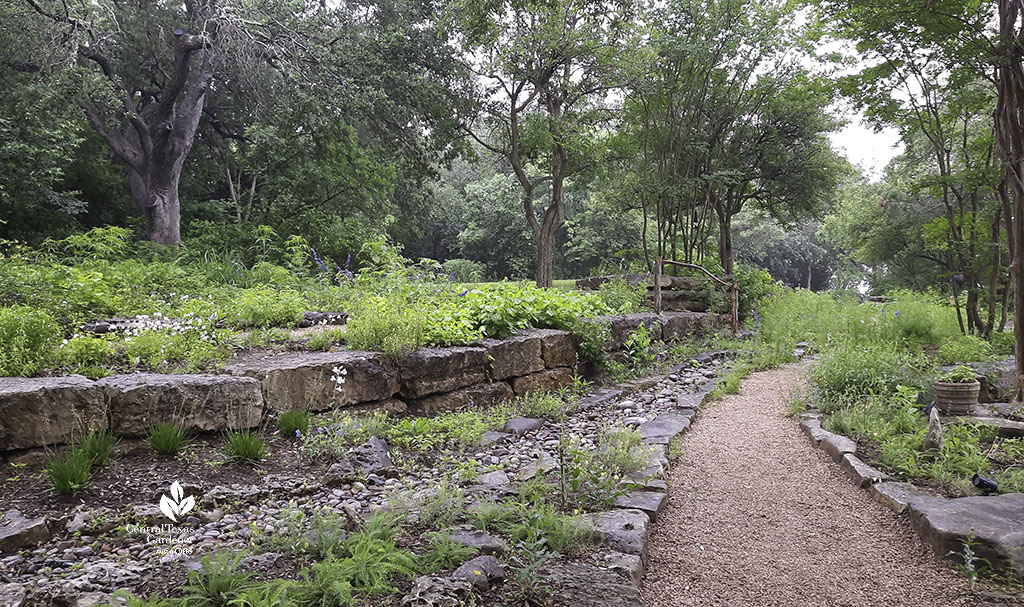[ad_1]
April 16, 2024
Make a Lovely Distinction

On Earth Day and each day, we actually could make a distinction—huge and small—as local weather challenges impression our consolation, our wildlife, and our life-essential assets like water.
It may be so simple as planting a couple of flowers. My long-term, drought-tough spuria irises at all times get a crowd, however I’ve by no means seen so many Purple Admiral butterflies, together with the standard wasps, bees, and flies. And sure, flies are nice pollinators!
To stroll us by means of a couple of simple methods to get began from the bottom up, Ted Maas of Maas Verde Panorama Restoration joins John Hart Asher this week.
They break it down to some fundamentals.
• Plant for variety, in order that one illness or climate occasion doesn’t wipe all of it out.
• Variety attracts varied bugs and birds (flowers, fruits, seeds, host crops
to boost younger).
• Numerous flowering and fruiting occasions assist feed wildlife all yr.
• Layer crops for visible intrigue, dimension in an everyday previous yard, wildlife habitat.
• Select tailored and native crops which can be suited to your soil and light-weight circumstances.
• Purchase from native nurseries whose workers truly backyard the place you reside.
• Keep away from pesticides. Numerous bugs on various crops will naturally steadiness prey-
to-predators.
• Depart the leaves (that’s how I primarily amended my clay soil; in addition they harbor
useful bugs over winter).
In his Hill Nation backyard, James Truchard checked all of the packing containers in a love affair together with his land.
He’s simply as sort and enchanting as his gardens, gladly sharing his knowledge and dirt-under-nails classes.
By way of his years of stewardship, he’s watched the climate change, habitat disappear, assets deplete, and wildlife discover a protected residence in his backyard.
He’s realized which crops work for him and tackled challenges, like stormwater response, together with a dry creek mattress and rainwater assortment. Learn the weblog about his backyard.
Since our honeymoon climate days are over as humidity and warmth take over, Daphne tackles fungal illness. Laura Zebehhazy despatched photos of her stricken tomato plant late final summer time.
It was too late to save lots of them then, however right here’s what Daphne mentioned to do now to keep away from the problem this yr: “That is blight, a normal time period to consult with completely different fungal ailments. If this can be a recurring difficulty for you, it’s instructed to make use of a fungicide protectant frequently, as soon as each seven to 10 days, if air is humid, and each 14 days if the air is comparatively dry.
For this kind of scenario, fungicides ought to be used as a protecting measure, previous to symptom growth, and NOT as a healing measure. As soon as the blight reveals up, there’s actually no reversing it. Generic copper sulfate fungicides will do the trick, and you possibly can additionally strive planting fewer tomatoes farther aside, to encourage air circulation between crops. Additionally make sure that the crops are getting full solar for no less than 6 to eight hours a day, and that you’re solely watering the rootzone on the base of the crops, NOT the leaves. And remember to take away any infested crops immediately, earlier than the issue spreads.
Bluebonnets moved over for trouble-free perennial salvias blooming proper now! This attractive image comes from current visitor Rebeca Quiñonez-Piñón, Local weather-Resilient Habitats Program Director on the Nationwide Wildlife Federation. Her husband collected a couple of seeds from the wild about 5 years in the past. He germinated them they usually’ve fantastically unfold, because of pollinators!
In late January, Wildflower Middle horticulturist Leslie Uppinghouse confirmed us the right way to in the reduction of previous progress on native perennial mealy blue sage (Salvia farinacea). Plus, she defined the right way to hold leggy crops blooming in summer time with Leslie Uppingham.
Watch all of it now!
Thanks for stopping by! See you subsequent week, Linda
[ad_2]


